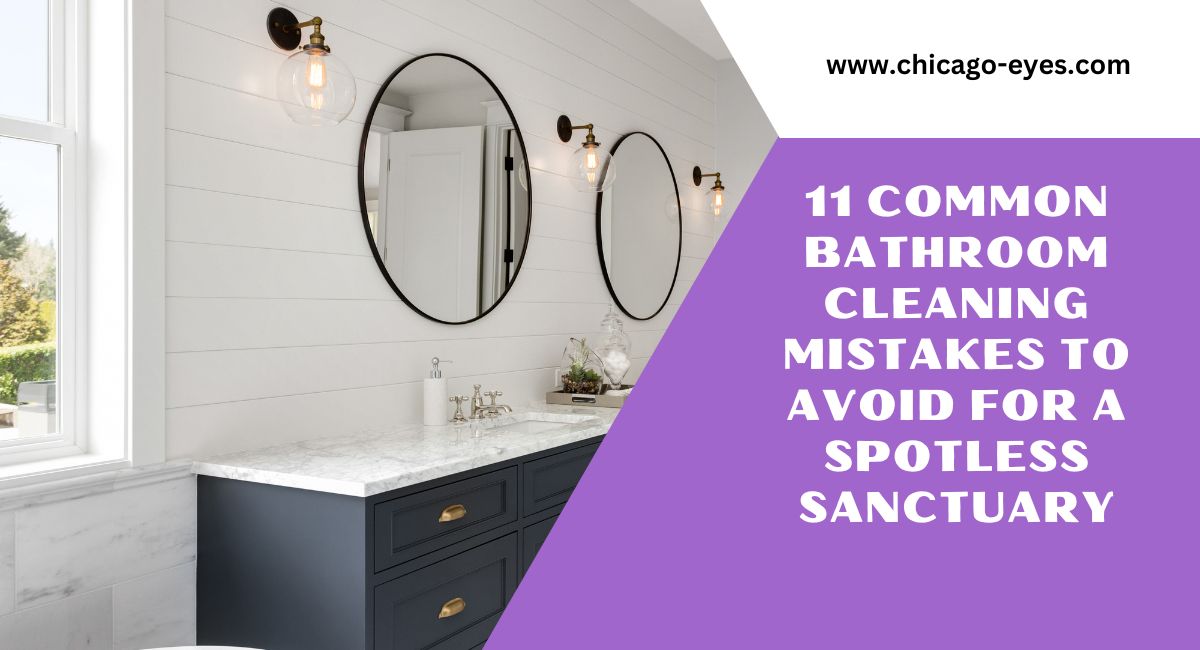The bathroom is arguably one of the most important rooms in the house when it comes to cleanliness and hygiene. However, despite our best efforts, it’s easy to make mistakes that can compromise the effectiveness of our cleaning routines.
From overlooking hidden germs to using the wrong products, these common bathroom cleaning mistakes can hinder your efforts to maintain a sparkling and sanitary space. Let’
xplore 11 of these pitfalls and how to avoid them for a truly pristine bathroom sanctuary.
1. Ignoring High-Touch Surfaces
While it’s essential to clean visible surfaces like countertops and toilets, many people overlook high-touch areas like faucet handles, doorknobs, and light switches.
These surfaces harbor germs and bacteria and should be regularly wiped down with disinfectant to prevent the spread of illness.
2. Using Too Much Cleaner
It’s tempting to douse surfaces with cleaning products in the hopes of achieving a deeper clean, but using too much cleaner can actually be counterproductive.
Excess cleaner can leave behind residue that attracts dirt and grime, making surfaces dirtier faster. Follow the manufacturer’s instructions for diluting cleaners and use them sparingly.
3. Neglecting Grout Lines
Grout lines between tiles are notorious for trapping dirt, mold, and mildew. Neglecting these areas can result in unsightly stains and even contribute to poor indoor air quality.
Use a grout brush and a mildew-fighting cleaner to scrub grout lines regularly and keep them looking like new.
4. Forgetting to Ventilate
Proper ventilation is crucial for preventing moisture buildup in the bathroom, which can lead to mold and mildew growth.
After showering or bathing, be sure to run the exhaust fan or open a window to allow steam to escape. Additionally, consider leaving the bathroom door open to promote air circulation.
5. Using Abrasive Cleaners on Surfaces
While abrasive cleaners may seem like a quick fix for tough stains and grime, they can actually damage delicate surfaces like marble, granite, and fiberglass. Opt for gentle, non-abrasive cleaners that are safe for use on a variety of surfaces to avoid scratching or etching.
6. Mixing Cleaning Products
Mixing different cleaning products, especially those containing bleach or ammonia, can produce toxic fumes that are harmful if inhaled.
Always read product labels carefully and never mix cleaning solutions unless directed to do so by the manufacturer. Instead, stick to one type of cleaner at a time to avoid chemical reactions.
7. Using a Dirty Sponge or Cloth
Reusing a dirty sponge or cloth to clean the bathroom can spread germs rather than eliminate them. Make sure to use clean, disposable wipes or washable cloths that are designated specifically for bathroom cleaning.
Wash reusable cloths regularly in hot water to kill bacteria and prevent odor buildup.
8. Skipping the Toilet Brush
While it’s not the most glamorous task, regularly cleaning the toilet brush is essential for maintaining hygiene in the bathroom. After each use, rinse the brush thoroughly with hot water and allow it to air dry in its holder. Periodically, disinfect the brush by soaking it in a mixture of bleach and water.
9. Overlooking Shower Curtains and Liners
Shower curtains and liners can harbor soap scum, mold, and mildew if not cleaned regularly.
To keep them fresh and clean, machine wash fabric curtains and liners with a gentle detergent and replace plastic liners as needed. Hang curtains and liners to dry completely after each use to prevent mold growth.
10. Not Cleaning Toothbrush Holders
Toothbrush holders are often overlooked during bathroom cleaning routines, but they can harbor bacteria from toothbrushes and toothpaste residue.
To clean, remove toothbrushes and rinse the holder with hot water. Then, scrub the holder with soap and water or run it through the dishwasher for a thorough clean.
11. Relying Solely on Disinfectant Wipes
While disinfectant wipes are convenient for quick cleanups, they may not effectively remove all types of dirt and grime from surfaces. For a more thorough clean, use a combination of wipes and spray cleaners, and be sure to follow up with a rinse or wipe down with a damp cloth to remove any residue.
Bottom Line
In conclusion, maintaining a clean and sanitary bathroom requires attention to detail and a commitment to avoiding common cleaning mistakes. By addressing high-touch surfaces, using the right products and techniques, and implementing regular cleaning routines, you can keep your bathroom looking and feeling fresh.
Remember, a clean bathroom not only promotes good hygiene but also contributes to a healthier and more comfortable home environment for you and your family.
